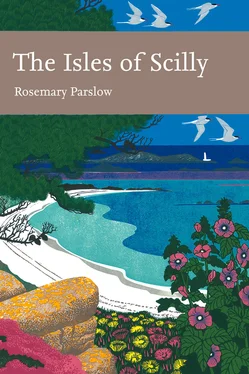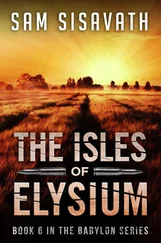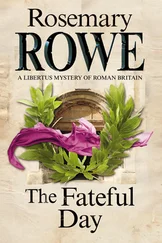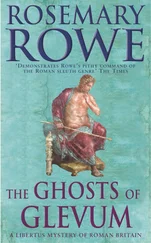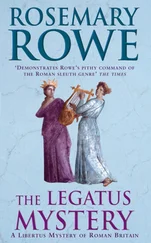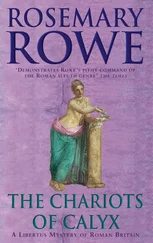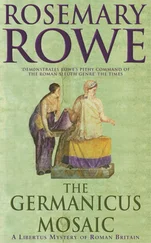The resident population of the islands has stayed at around 2,000 for many years. Of these about 1,600 live on St Mary’s, with about 160 on Tresco and 100 on each of the other inhabited islands (St Martin’s, Bryher and St Agnes). During the summer holiday season visitors approximately double the population.
The Isles of Scilly became part of the original Duchy of Cornwall in 1337 when Edward, the Black Prince, became the first Duke of Cornwall. Today the islands are still owned by the Duchy, administered by a resident Land Steward. The Duchy is governed by a Council, of which His Royal Highness the Prince of Wales and Duke of Cornwall is Chairman. Much of the land on the inhabited islands is in agricultural tenancies, with the exception of the island of Tresco, which is leased to the Dorrien-Smith family, and Hugh Town, which became freehold in 1949 (Mumford, 1987). In 1999 there were some sixty farm-holdings, covering 557 hectares, of which 182 are in horticultural use, mostly bulbs. The average farm on the smaller islands of Bryher, St Agnes and St Martin’s is very small, sometimes less than 10 ha, although those on St Mary’s and Tresco are proportionately larger. Many fields are equally small, some less than 0.1ha (Pontin, 1999). Some 1,845 hectares of the unfarmed land are now leased to the Isles of Scilly Wildlife Trust, mostly heath, wetland and coast on the inhabited islands and including all the uninhabited rocks and islands.
The Council of the Isles of Scilly
The Council of the Isles of Scilly is a unitary authority (Local Government Act 1972, as applied by the Isles of Scilly Order 1978). This means the Council has unusual powers in that it has all the functions of county, district and parish councils as well as replacing the Environment Agency and the airport authorities in the islands. The islands are not automatically included in all national legislation. There are sometimes specific references or amendments to ensure that legislation also refers to the islands.
TRAVELLING TO THE ISLES OF SCILLY
These days getting to Scilly is no longer the difficult and chancy business it was in the past, and we can easily forget that for earlier visitors the journey was frequently an ordeal. Passengers could arrange to go by sailing ship to the islands, but it was not until the start of the regular mail boat after 1827 that there was an organised service from Penzance to St Mary’s. Even so the passage usually took eight to nine hours and at times as much as two days. Things picked up when a steamer service started about 1858, and a year later the railway was extended to Penzance. Then in 1937 the air service started linking Scilly with the mainland, offering an alternative and much quicker route for those reluctant to brave the sea crossing.
The RMV Scillonian (Fig. 6) is the third of that name to have carried freight and passengers between Scilly and the Cornish mainland. She sails most days (except Sunday) between spring and autumn, the crossing taking about two and a half hours according to conditions. The Scillonian is notorious for her rolling motion, which is due to her shallow draft, designed to enable her to enter the shallow waters around the islands; but the possibility of seeing unusual seabirds, cetaceans and other excitements during the passage makes her popular with many visitors. The alternative routes to Scilly are by air, either fixed-wing plane or helicopter, both of which take about twenty minutes; but neither flies if there is fog. Flying is the only route in winter when the Scillonian is laid up. A second ship, the MV Gry Maritha , now transports most freight to the islands. Inter-island launches meet the ships in St Mary’s and transfer goods of all kinds to the ‘off-islands’, as the other four inhabited islands are known locally.
FIG 6.The RMV Scillonian in harbour after her two-and-a-half-hour sail from Penzance. July 2006. (Rosemary Parslow)
It was not until after World War II that Scilly became really popular as a holiday destination, with hotels and guesthouses opening up to accommodate many more visitors, including many naturalists. In 2003 Scilly attracted 122,000 visitors (Isles of Scilly Tourist Information). Tourism now accounts for some 85 per cent of the island economy, although apparently a significant amount of the profits goes off the islands to the mainland-based owners of holiday property and hotels. Most visitors stay in holiday accommodation on the islands, including hotels, guesthouses, cottages and camp sites. Others arrive and stay on their yachts and motor cruisers.
THE UNIQUENESS OF THE SCILLONIAN FAUNA AND FLORA
We will see in later chapters that the Isles of Scilly aptly demonstrate the phenomenon of island biogeography. In all groups of flora and fauna there is a paucity of species compared with Cornwall, and this is a theme to which we will return. This paucity is readily attributed to the distance from the mainland, the much smaller land area and the limited range of habitats compared with those in Cornwall, with no rivers, only a few tiny streams, no acidic mires (bogs) and only granitic bedrock, with none of the slates, serpentinite and other rock types of the mainland. Widespread exposure of habitats on the Isles of Scilly may also account for the absence of some species that are susceptible to wind-blown salt spray. For example there are currently about 217 bryophyte species (57 liverworts, 3 hornworts, 157 mosses). Of these, six liverworts and five mosses are species introduced in Britain. Compared with Cornwall the total bryophyte flora is much poorer, with only about 36 per cent of the overall Cornish total of 167 liverworts (including hornworts) and 37 per cent of the total of 430 mosses. Scarcity of basic soils on the Isles of Scilly may also account for the absence of some other species common in Cornwall.
The number of species of land birds in Scilly is also small. Visitors to the islands are usually surprised to find many common passerines, let alone owls and woodpeckers, missing or in very low numbers. Equally the very confiding nature of blackbirds Turdus merula and song thrushes T. philomelos will soon be remarked on. The Isles of Scilly have hardly any land mammals, and no predators such as foxes Vulpes vulpes or stoats Mustela erminea . There are no snakes and very few resident species of butterflies or dragonflies; this is common for all groups. But on the other hand there are species that are only found in Scilly, such as the Scilly shrew Crocidura suaveolens cassiteridum , several rare lichens and many other examples of interesting and uncommon species.
Lusitanian and Mediterranean influences
References will be made in the following chapters to Lusitanian influences. The geographical position of the Isles of Scilly has led to a number of unique aspects of the flora and fauna. Many species are at their northern limit in Scilly and southwestern Britain. These are species from the Atlantic coastal regions of southern Europe, based on the former Roman province of Lusitania, and into the Mediterranean. A visit to parts of Spain or Portugal will reveal many species of plants that are commonly seen in Scilly, but that are rare of absent from the rest of Britain. There are also lichens, invertebrates and other groups with Lusitanian species that reflect the same distribution, and in the marine environment many species found in southern or Mediterranean waters that also occur in the Isles of Scilly and the Channel Islands. In the New Atlas of the British and Irish Flora (Preston et al., 2002) the floristic elements of the flora are described: the Mediterranean-Atlantic and Submediterranean-Subatlantic are plants that are associated with these biogeographical regions.
Читать дальше
